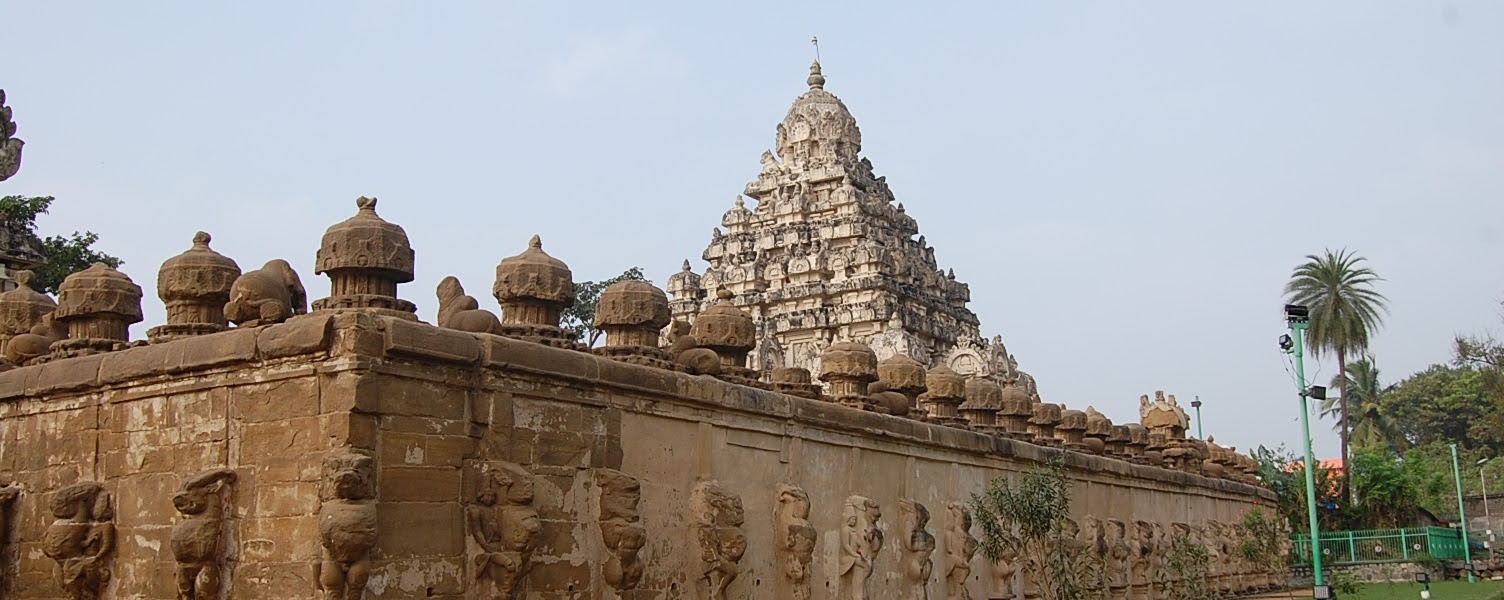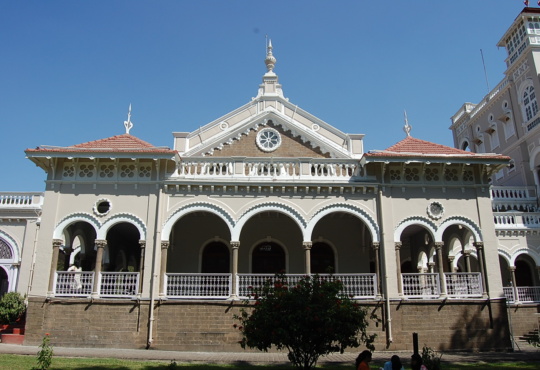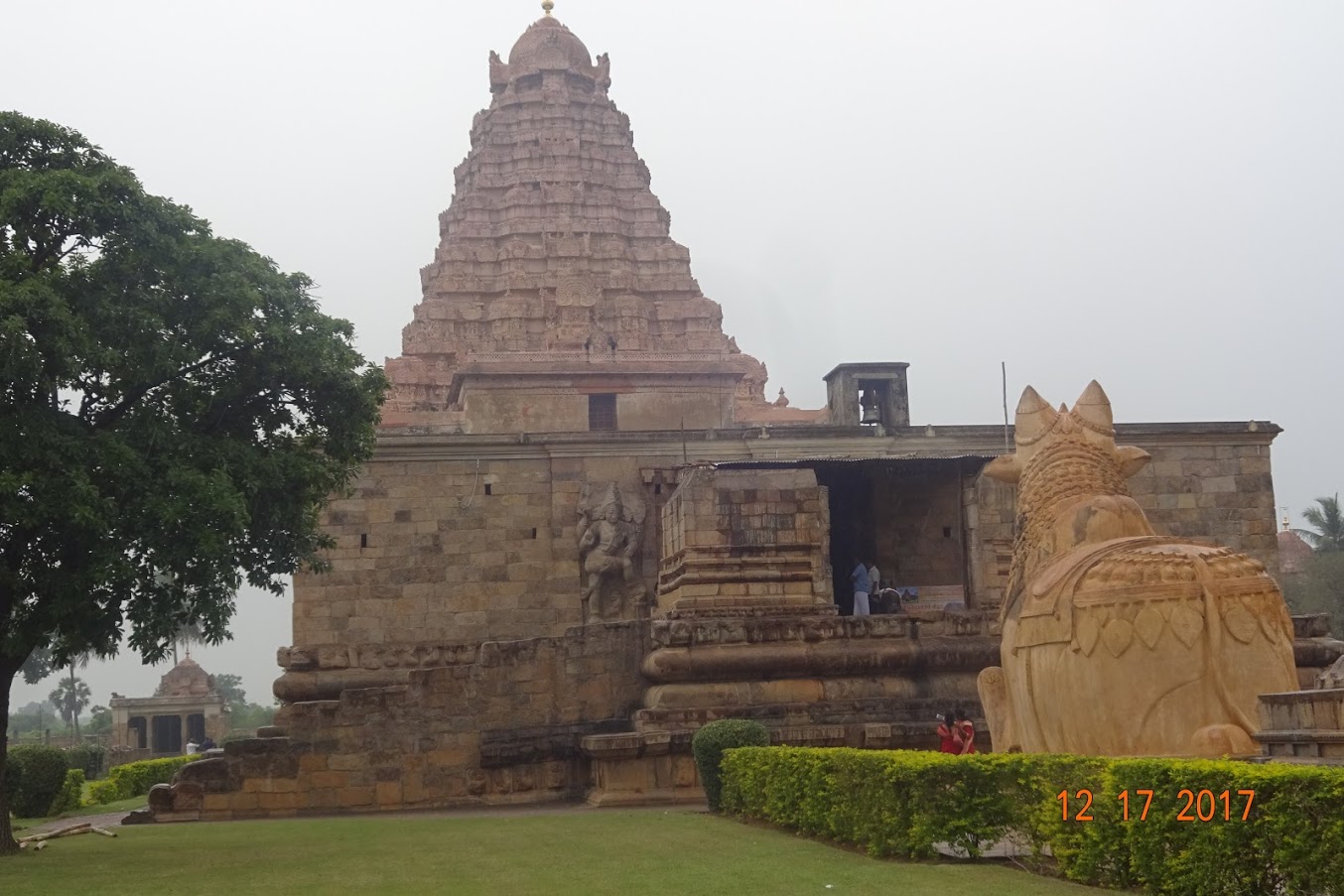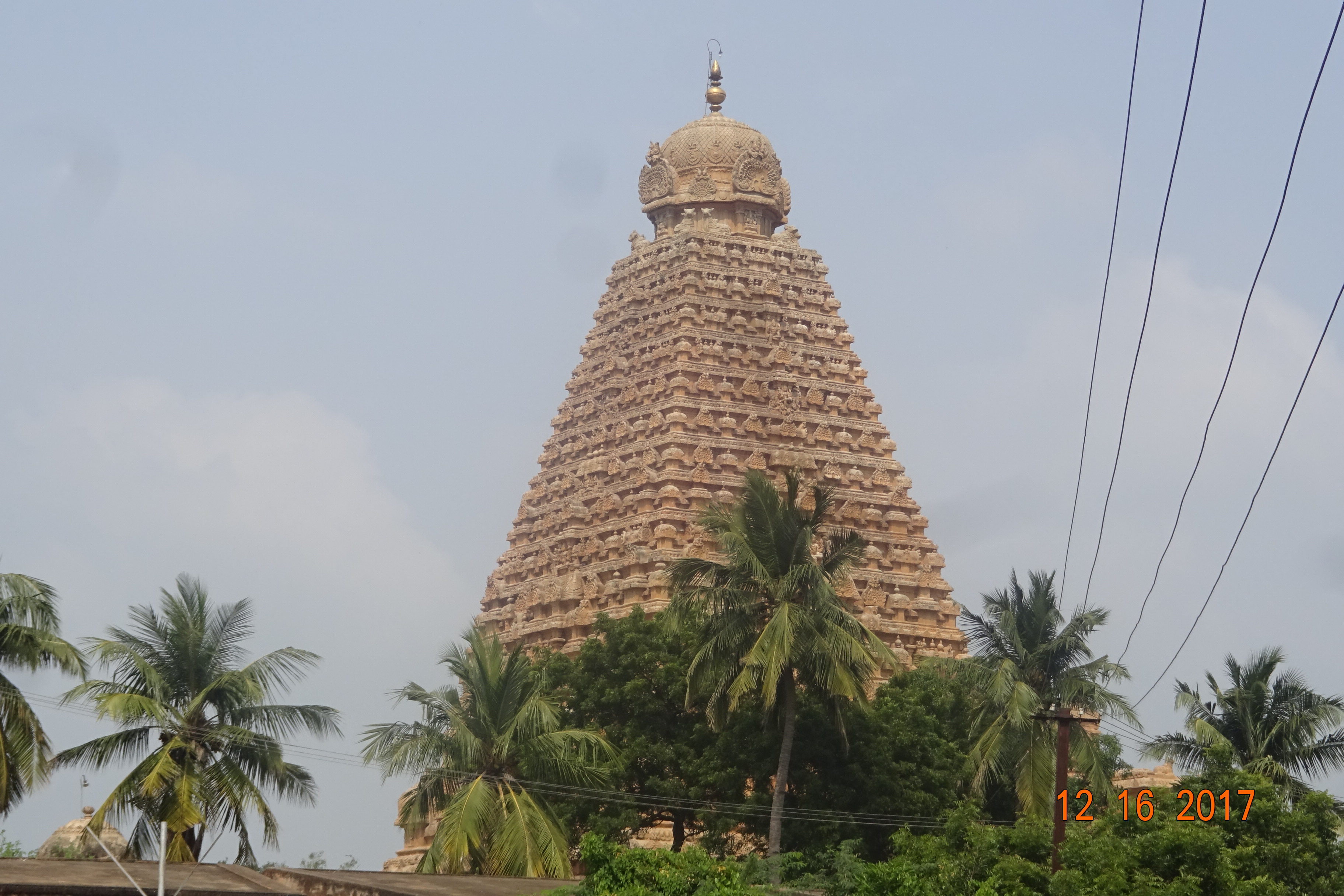
Kanchi Kailasanathar Temple (2023)
Kanchipuram is a historical city. It is a city of Temples. It was a center of learning for Buddhism, Jainism and Hinduism. The city is known for its Silk Sarees. In many respects, Kanchipuram is the Kasi of the South. In this great city there are at least 100 temples, and one stands out like a beacon. Kailasanathar Temple built by Pallava King Rajasimha (700-728 CE) is outstanding for its architecture and trend setting design. This temple introduced the style of constructing temples all in stone (granite and sandstone) instead of brick, lime or wood. This temple popularized the structure for a stone temple namely, Gopuram, Mandapam, Garbhagriha, Vimana, Prakaram and shrines around it. This temple served as a role model for Virupaksha Temple at Pattadakal in Karnataka (740 CE), Kailasa temple at Ellora, Maharashtra (756-773 CE ) and Brihadeeswara Temple in Tanjore (1003 CE ). Ironically all three temples, modeled after Kanchipuram Temple are designated as World Heritage monuments by UNESCO but the original is left out, probably due to an oversight by Government of India. I heard an application has been filed recently with UNESCO.
Facts about Pallavas, Temple Architecture and Kailasanathar Temple:
Pallava dynasty ruled a part of Tamil land, Thondai Mandalam for 650 years (250-900 CE). Kanchipuram was its capital.
Pallavas fought and won wars with Pandyas, Chalukyas and other local kingdoms. They drove Kalabhras (Karnataka clans) who ruled for three centuries out of power.
Pallavas were patrons of dance, music, painting and architecture.
For centuries, Hindu Temples were made either by brick or lime or wood either alone or in combination like temples of Kerala.
Mahendra Varman I (600-630 CE) broke the mold and built monolithic rock cut temples in Mahabalipuram e.g. Pancha Ratha.
Appar, Sambandar and Thiruneelakanda Yazhpanar lived during Mahendravaraman’s period and spread the Bhakti movement.
Appar converted Jain Mahendravarman to Hindu Mahendravarman and the King started building Hindu (rock cut and cave temples) temples.
Mahendravaraman I also became a patron of music, dance, literature and painting. Thevaram and Thevara Pann (music) were given importance.
After 4 generations, Narasimhavarman II alias Rajasimha (700-728 CE) came to power and built Shore Temple at Mahabalipuram. Then he built his masterpiece, Kailasanathar Temple in Kanchipuram.
Rajasimha extended the idea of monoliths and cave temples put forward by Mahendravaraman. He gave structure to modern temples. He built a “stone” temple with Mandapam, Garbhagriha, inner passage to circumambulate, Prakaram and shrines around. The sanctum sanctorum has a multi-sided Sivalingam. Most of the shrines have reliefs depicting Siva either as Samharamurti or Anugrahamurti. They also show his exceptional dance postures (Uthrava Thandavam, Kunjitha patham). There are shrines for other Gods namely Parvati, Brahma, Vishnu and Ganesa. Rajasimha had a fascination for Somaskanda (Siva, Parvati and Skanda) and carved the figure in many shrines and the backwall of Garbhagriha. A mandapam for Nandi and a pond for the temple were also included in the design.
Rajasimha’s son Mahendravarman III added a façade, gopuram and arthamandapam (middle hall) to the temple. Façade has several shrines with Sivalingam.
Chalukya King Vikramaditya II captured Kanchi in 735 CE and in awe, he left the temple intact. There is an inscription stating his reverence to the temple in one of the pillars. He also took the sculptors of Kanchi to Karnataka to build such temples.
Unique aspects of Kailasanathar Temple:
Kailasanathar Temple has 58 shrines around the courtyard (prakaram). Each shrine has a meditation cell, with a sculpture or a painting of God to meditate. Such meditation cells were common among Buddhists and Jains at that time.
There is an inner passage (pradakshinapatha) around the sixteen faceted Sivalingam (dharalinga) in the Garbhagriha. It is described as Sorga Vasal (passage of Moksha)l. It has a small hole to enter, a small passage to walk around and a smaller hole to exit. It is symbolic of birth, life, death, and rebirth. The ultimate prize is salvation, Moksha.
The temple has amazing light effect. It is designed to face south east so that the shrines can receive sun light all day at different angles and they can appear in different color (dark and light). As season’s change sun’s path changes and the shrines shine differently. Astronomy was taken into account in the floor plan.
My visit:
It was an easy ride from Anna Nagar, Chennai to the temple in Kanchipuram (45 miles). I was shocked to see how unassuming the temple surroundings were. It is on a normal, busy, small town street. Regular stores are on one side of the street and the temple is on the other side. People walk around, doing their normal business, unmindful of a World Class Monument on the other side of the street. There is no parking space. We just parked outside the fence of the temple. When we entered the compound, there were two sign boards announcing it as an Archaeological Survey of India site. There was no sign of any guide. Someone said if we want a guide we need to bring one from The Kamakshi Amman temple. Luckily we got hold of Mr.Murugan, the security guard of the temple and requested him to take us for a tour. He obliged and showed us key shrines and Garbhagriha. I was able to take as many photos as possible within two hours of our tour. Photography is allowed in all places except Garbhagriha. Though the temple is an archaeological society site (public monument), it is still a functioning temple for devotees. We went on a Thiruvathirai day, an auspicious day for Siva. There were only a handful of people around. It was a blessing in disguise. There was less traffic and less noise. Temple was all for us to explore. It is rare to see an original; rarer to see it in original condition.
Unique experience:
I am claustrophobic and generally avoid confined space. However, I managed to complete one round of circumambulation of Kailasanathar in the tunnel-like inner passage surrounding the Garbhagriha. Thanks to the guide Mr.Murugan who dragged me into it. If he had told me in advance what I was getting into, I would have refused. Now that it is completed, it feels like an adventure. There is a belief that you shall attain moksha if you circumambulate the Sivalingam there.
Thanks to my brother-in-law K V Sathyanarayanan for arranging this trip at short notice.
References/Acknowledgment:
There are plenty of write ups and YouTube videos on this temple in the Internet. Thanks for the ones I used here-
Wikipedia- Pallavas History, Kailasanathar Temple
Book- Pallavas History in Tamil (பல்லவர் வரலாறு) by Dr. Rajamanickam, online version
https://www.tamilvu.org/library/nationalized/pdf/03-rasamanickam/pallavarvaralaru.pdf
Flickr slides by R. Muthusamy in the internet for the description of Puranic stories of each relief-
https://www.flickr.com/photos/muthusamy/10475294574/in/photostream/
A lecture by Padma Kaimal in YouTube-
https://www.youtube.com/watch?v=y6DGk29YaMQ&list=PPSV
YouTube video by Raman Raghav- path of moksha video-
https://youtu.be/TGIJe85LEA4
A nice travelogue by Viki Pandit-
https://www.vikipandit.com/kanchi-kailasanathar-temple/
My travelogues on Brihadeeswarar Temple, Tanjore and Kailasa temple, Ellora-
https://photos.app.goo.gl/vEuEgkzXgTYakpxv7
https://photos.app.goo.gl/YVzqbCnvCa1tBJrt5
They are also found in my blog- Muruganand.com
Album and disclaimer:
There is caption for all but few slides. Most of the photos were taken by me (dated Jan 5 and 6 in two different cameras). Some are not. I took liberty to pick a few from the internet to help the photo tour. They are indicated in the caption column, under disclaimer.



